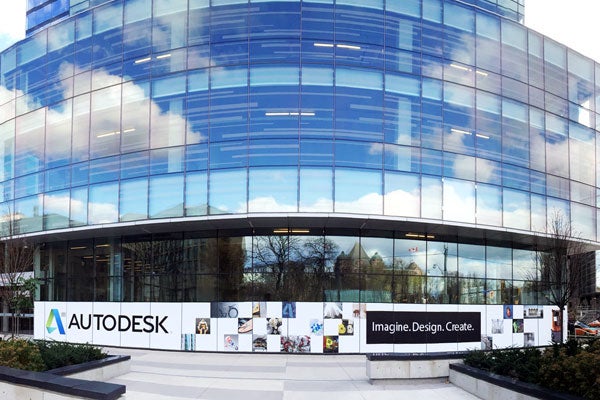
Software giant Autodesk moves into MaRS
Published: November 20, 2015
Autodesk – the high-tech software company that helps create everything from special effects in film to 3D prosthetic limb sockets for real-life users – is moving to MaRS.
“We’re thrilled to be moving to MaRS to be close to leading research groups and incredible talent,” said alumnus Gordon Kurtenbach, senior director of research at Autodesk.
“We intend to be a greater part of the community, enabling the next generation of makers and doers to push their crafts into new and unexpected directions with our design tools.”
The company's U of T roots run deep – in 2006, it acquired Alias (originally known as Alias/Wavefront) renowned for the work of U of T alumnus and honorary grad Bill Buxton and for its cutting-edge software for 3D design, engineering and entertainment. Maya, the signature Alias animation product, has been used to bring many major films to life, including Jurassic Park, Jumanji and Star Wars Episode I.
Today, the multinational company provides tools for architects, engineers, designers and visual artists creating their own reality through cloud-based software and maintains a strong presence in Canada. More than 100 U of T graduates have worked for Alias or Autodesk over the years. Employees have become faculty and vice versa.
Autodesk announced recently that it will occupy the second and third floors of the West Tower, a total of more than 60,000 square feet. The company said it is also taking over the street-level space at the northwest corner of the building and will transform it into an events space and design sandbox for exploring emerging technologies, engaging with the innovation community, and collaborating on high-impact projects.
Among this community of innovators, Autodesk has already partnered and contributed to multiple startups and projects coming out of U of T.
Through 3D scanning and printing, Autodesk has been working with a U of T lab to create prosthetic limbs for Ugandans. Autodesk technology allows Matt Ratto and his team at the Faculty of Information to create digital images and 3D prints of highly customized prosthetics at a fraction of the time and cost of current techniques. (Read more about Ratto and the 3D Lab.)

Toronto’s Autodesk team has also been working with U of T and 26 other institutions worldwide on the Parametric Human Project. This project, which aims to create digital models of individual muscles, has wide applications for the health care sector and medical research.
Yet another Autodesk collaboration is with U of T’s Team Attollo, a social enterprise that aims to improve the literacy of underprivileged children through talking stickers.
This innovation (pictured below) was recently one of six finalists in the running for the Hult Prize administered by the Clinton Global Initiative. (Read more about Team Attollo)

“U of T’s history with Autodesk goes back to Buxton, but it certainly doesn’t stop there,” says Karen Sievewright, managing director of U of T's Banting & Best Centre for Innovation & Entrepreneurship.
“Autodesk’s extensive software, and now their footprint at MaRS, create a great opportunity for students to explore their creativity and contribute to the future of design and development in an experiential and hands-on environment right here in Toronto’s innovation ecosystem.”



